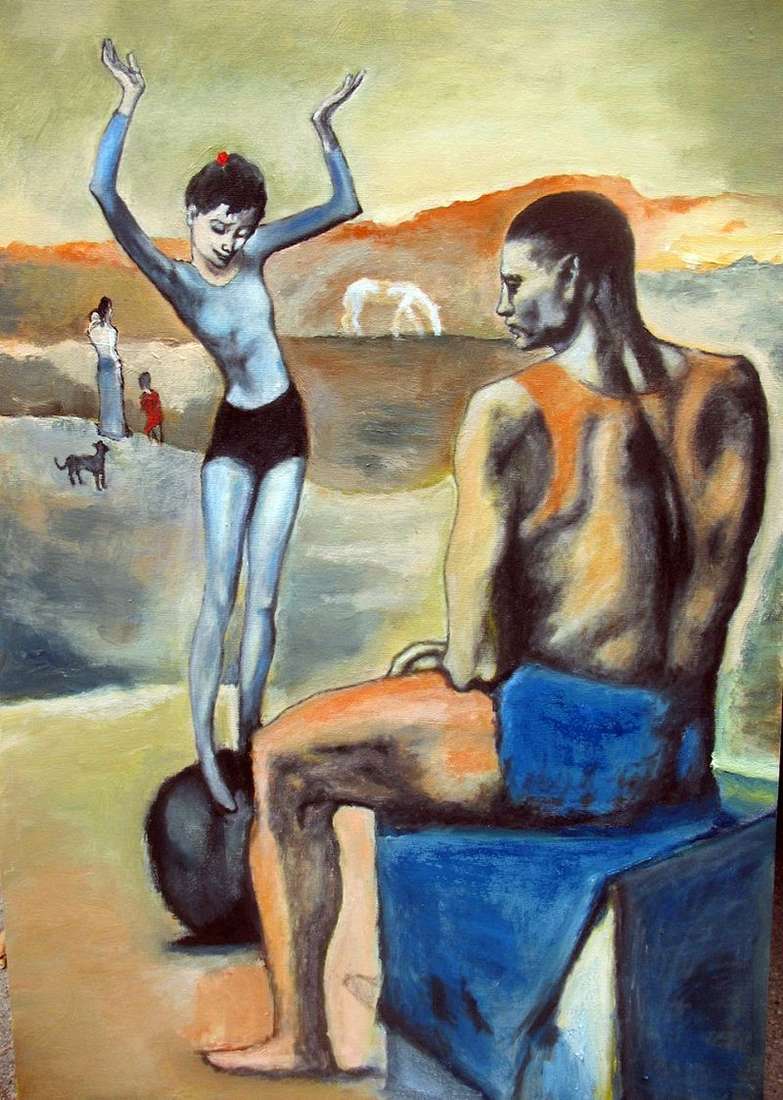
The “pink” period of creativity, which replaced the gloomy “blue”, is also called the “circus”, since the main characters of most Picasso’s canvases are wandering artists.
Circus artists at that time were considered to be representatives of the lower class, such outsiders of society, however, they, however, were free and independent. It was this romanticized freedom that fascinated avant-garde artists who sought to “throw off” the shackles of the academic genre and set off after their imagination, despite criticism and conservative society. So that the image of circus performers, harlequins, jesters was extremely fashionable and popular at that time. Do not stay aside this topic and Picasso.
The canvas depicts a family of circus performers, while there are assumptions that all the characters in the picture are real people, not the fruit of the artist’s imagination. The fact is that Picasso himself loved to go to the circus “Medrano”, which was located on Montmartre, where he drew inspiration.
The first thing that attracts attention is the slender composition of the picture. All the heroes of the canvas are psychologically alienated from each other – they do not communicate with each other, even their views do not intersect, but nevertheless, combined together, they look harmonious and harmonious.
The heroes of the work are in a thoughtful, melancholic mood. It seems that this rather big family is once again going to move somewhere, but everyone is waiting for one woman who sits closest to the viewer, looks sadly into the distance and for some reason does not hurry to leave this place.
The nature of the activities of the heroes emphasized clothing. However, their attitude to the creative environment is even more demonstrated by their legs – they stand in specific dance positions.
As for the technical side of the work, the author worked here in the usual for the “pink” period color – warm ocher, gold, silver and pink gamma. More attention, as already noted, Picasso paid composition – recent x-ray studies have shown that the master several times rewritten the arrangement of the figures on the canvas, until he achieved the desired result.
Like many works by Picasso, this picture has long been “living” in the United States, namely, in the National Gallery of Art in Washington.
 Harlequin and his girlfriend by Pablo Picasso
Harlequin and his girlfriend by Pablo Picasso The girl on the ball by Pablo Picasso
The girl on the ball by Pablo Picasso Family of an acrobat with a monkey by Pablo Picasso
Family of an acrobat with a monkey by Pablo Picasso The boy is the lead horse by Pablo Picasso
The boy is the lead horse by Pablo Picasso The Soler Family by Pablo Picasso
The Soler Family by Pablo Picasso Boy with a pipe by Pablo Picasso
Boy with a pipe by Pablo Picasso The girl on the ball by Pablo Picasso
The girl on the ball by Pablo Picasso Boy with a dog by Pablo Picasso
Boy with a dog by Pablo Picasso